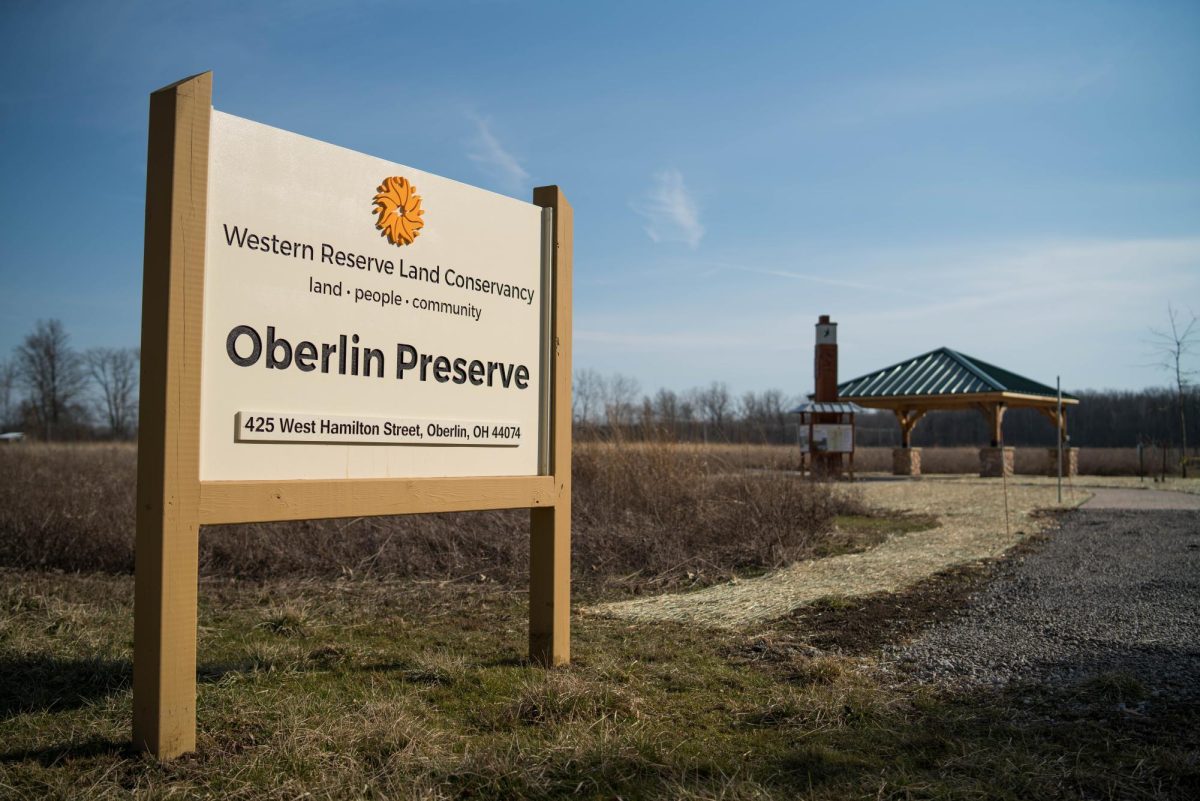In the coming months, the Oberlin Preserve is aiming to increase the accessibility and reach of its grounds through multiple infrastructure projects. These projects include a new pavilion with a walkway accessible to disabled visitors and a trail moving through the reserve’s woodland areas.
Located at the southern edge of town on 425 W. Hamilton St., the Preserve was first acquired in 2015 by the Western Reserve Land Conservancy, a nonprofit organization focused on maintaining Ohio’s natural environments. According to Kate Pilacky, associate field director at WRLC and land manager for the Preserve, these new projects come in response to years of requests from the Oberlin community for more accessibility.
In response to these needs, the park pavilion will include numerous features adhering to the standards of the Americans with Disabilities Act. The Preserve will add a handicapped space to its parking lot, with a brick ADA-compliant walkway extending from the parking lot into the Preserve. People can participate in the “engraved brick program,” having their names put on the walkway floor in exchange for donations supporting the Preserve’s initiatives.
The welcome pavilion will be at the end of the brick walkway. It will include a concrete floor, a wooden covering, benches for seating, and educational panels. A fine gravel pathway will extend out from the pavilion into the open prairie landscape.
“The major part of the construction just ended maybe a couple of weeks ago,” Pilacky said. “We haven’t gotten the benches installed yet in the pavilion, so it’s still kind of a work in progress.”
Alongside the pavilion, the second of the Oberlin Preserve’s major initiatives is a new trail moving through its woodland areas. Funded through a Clean Ohio grant from the state government, the trail will consist of looser gravel and loop through the area’s wetlands, as well as a boardwalk connecting to multiple other trails accessible to bicyclists and hikers. The Preserve’s 63 acres are split near-equally between woodlands and planted prairie. Pilacky hopes that the new trail will expand access into the former region.
Throughout renovations, the Preserve has had to adapt to varying concerns, many of which have been storm-related.
“We’re working on hydrology issues,” Pilacky said. “When we put in the ADA walkway at the pavilion, it was elevated a few inches so it wouldn’t be impacted. We’re making adjustments as we go along.”
These adjustments have been facilitated through close collaboration with the Oberlin City government, specifically obtaining permits from the City’s Planning Commission. The Commission approved the pavilion and the ADA parkways, with the projects falling under the City’s commercial building code.
“The biggest thing we’ve talked to [the Preserve] about is handicap accessibility and making sure that what they put in there is accessible,” Carrie Porter, Oberlin director of planning and development, said.
In addition to providing permits, Porter and the planning commission assisted the projects by writing a letter supporting the grant for the woodland trail and approving a comprehensive plan that designates the land for future conservation.
“[The Preserve is] a way to provide a natural area within the city limits,” Porter said. “A lot of times in cities, there’s not that opportunity … They’re conserving it for the future, too. So I think that’s important. So we know that that space will, hopefully, be there forever for people to enjoy.”
Ultimately, the projects reflect the Preserve’s broader environmental goals, renewing the space for future use. Additional plans for the space include a team of volunteers helping both to rid the area of invasive species and to re-introduce native species. This will bring together both Oberlin students and community members and involve specific entities like Oberlin’s Green EDGE Fund.
This balancing of community and environmental sustainability for Pilacky is central to the new pavilion and trail.
“It’s very important to us that as many people as possible can enjoy the variety of habitats we have, but we’re trying to do it so it doesn’t impact the wildlife,” Pilacky said. “The projects are done with a lot of thought [for] people and for nature.”
In an email to the Review, WRLC’s vice president of Western Field Operations Andy McDowell confirmed that a ribbon-cutting ceremony for the new pavilion will occur in May or June.
Pilacky urges visitors to check out the Oberlin Preserve’s new features later this year.
“It’s a wonderful place to go for a walk,” she said. “There’s no other opportunity in Oberlin that comes anywhere close to the opportunities you would experience on the trail and the trail that is coming. It’s a well-kept secret, and hopefully, more people will know about it.”




